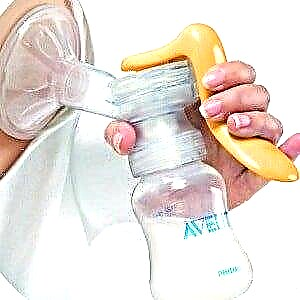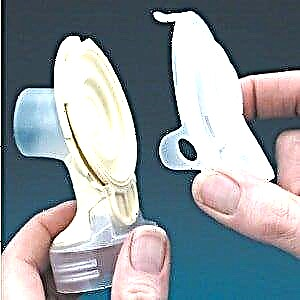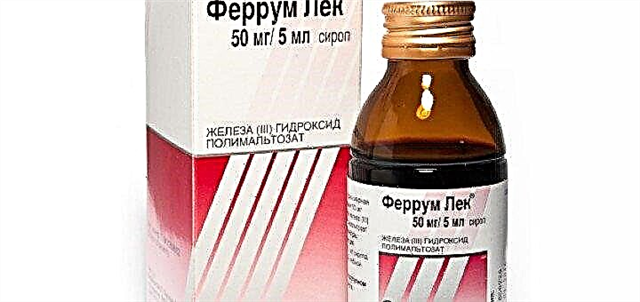Device creation history
A modern breast pump is a high-tech device that allows you to breastfeed not with your bare hands, but in automatic or semi-automatic mode. But such devices were not always as thoughtful as they are today.
Experts say that the prototype of the breast pump was created in the 16th century by the French court doctor A. Paré. The device was a glass device with copper elements, which was kept in a velvet box. It was not very convenient to use it, since it took a lot of effort.
The devices, reminiscent of today's examples, were designed in 1854 by the American inventor O. Needham. A dozen years later, another designer L.O. Kolbin created another version of the model, which formed the basis for future breast pumps.
The first mechanical breast pump that reproduces or imitates the process of sucking a baby's breast was developed in 1920 by designer Edward Lasker. It was this invention that became a real breakthrough in the field of hardware pumping of breast milk.
The engineer was the first to notice that the milk secret is not constantly released, but sequentially - in several steps. At first, the baby irritates the papilla, thereby stimulating the flow of milk. After which it absorbs the liquid effortlessly. And only then he sucks on the breast to get a more satisfying product. It was these observations that formed the basis of the invention.
Breastfeeding women quickly appreciated the benefits of hardware pumping: quick milk flow and prevention of lactation problems. In addition, the device is so simple that any new parent can learn to use it. It remains to understand whether you really need it.
When do women need a breast pump?
Before purchasing a breast pump, you should clearly understand that this device is not mandatory for all breastfeeding mothers. This device really solves many problems. But if there are no readings, then you do not need to use the device just like that.

Breast specialists are convinced that a breast pump should only be used for certain indications:
- stimulation of lactation. For optimal discharge of breast milk, you need to apply the baby to the breast very often. However, premature or weak babies are not able to stimulate lactation, therefore, in such situations, a breast pump is used;
- lack of milk secretion. If there is a shortage of breast milk, then experts advise to express after each meal. This regularity allows you to increase the volume of milk for the next feeding;
- inability to express milk by hand. Many women successfully express milk by hand, but if such skills are not available, it is better to perform a hardware procedure, which is considered less traumatic.
And yet, in some cases, technical devices not only will not help, but will also harm. When is hardware pumping contraindicated (or not recommended) for nursing mothers?
- lactostasis. The widespread belief that using a breast pump helps free the breast and get rid of milk stagnation is largely wrong. In some cases, hardware pumping only aggravates the problem, so experts recommend massaging and kneading the hardened areas with your hands;
- a sufficient amount of milk secretion. Using the technique for prophylactic purposes will only lead to increased milk supply and breast overflow. If the child has eaten normally, and the woman has additionally expressed milk, the volume of the product will only increase with the next feeding.
Previously, a woman expressed expression after each breastfeeding due to hourly feeding (according to the schedule). Today, however, most breastfeeding experts are convinced of the benefits of feeding on demand. In this case, breast pumps are not needed, since the baby receives as much milk as he needs.
Which breast pump is better? Varieties of devices
All breast pumps work in a similar way. These devices create a vacuum around the areola and pull the milk out of the breast. However, the very process of obtaining milk secretion depends on the type of apparatus.
Milk aspirators are usually divided into two large groups: mechanical (manual) and electrical. The first, in turn, are subdivided into pump, syringe and piston. What's better? To answer this question, one should carefully study the features of each apparatus and understand the subtleties of their functioning.
Pump apparatus
| Parameter | Features: |
|---|---|
| Equipment | An elementary type of manual breast pumps, consisting of a nozzle, a rubberized pump (pear) and a bottle (not available in all models). |
| Working mechanism | The milk secretion enters the container due to the formation of a vacuum around the nipple. The vacuum is created by pressing the pump or pear-shaped device. |
| Using | The attachment is tightly applied to the areola area. The woman presses the funnel to her chest with one hand, and often presses the pump with the other. |
| The target audience | It is useful for those women who pump very rarely or even occasionally. |
| Benefits |
|
| disadvantages |
|
Chicco pump with bottle
This device attracts parents not only by its favorable cost, but also by its ease of use, fast and rather effective (for its class) pumping. Suitable for those mothers who do not have any special difficulties with lactation.
The set includes a plastic bottle (volume 150 ml) and a screw cap. A special valve regulates the speed of the device, and the nipple with anti-colic effect allows you to give the baby milk immediately after expressing.

Benefits:
- the regulator valve allows you to monitor the pressure;
- safe hygienic plastic;
- wide lining prevents milk from leaking;
- anatomical nipple;
- easy and convenient sterilization;
- affordable price.
Disadvantages:
- does not stimulate milk production;
- hands get tired of pressing the pear.
Manual breast pump Chicco Natural Feeling 05740.00
Syringe machine
| Parameter | Features: |
|---|---|
| Equipment | Another type of manual breast pump. The device consists of two cylinders, which are nested one inside the other. Another element is a special milk container. |
| Working mechanism | It is similar to the previous type of apparatus, that is, milk secretion is obtained by the formation of reduced pressure in the area of the mother's nipple. |
| Using | The woman puts the inner "syringe" on the areola area, while the outer one makes pumping movements (back and forth), which create the necessary vacuum. At the same time, the milk moves into a special container, which is also used as a bottle. |
| The target audience | Suitable for those breastfeeding women who pump from time to time and want to save money on this device. |
| Benefits |
|
| disadvantages |
|
Nuk Soft & Easy manual
An inexpensive and high-quality syringe breast pump is intended primarily for those mothers who are going to express milk occasionally, not regularly. The device consists of a minimum number of parts, which is very convenient for maintenance and cleaning.
The cylinder unit can be used as a feeding bottle, however a compatible teat and screw cap must be purchased separately. Another plus is that the soft silicone cushion pleasantly massages the breast while expressing milk.

Benefits:
- is inexpensive;
- a good option for rare pumping;
- wide stable leg;
- ease of care;
- improves the shape of extended nipples;
- uniform expression of milk.
Disadvantages:
- hands get tired;
- milk is leaking;
- a small amount of expressed milk secretion.
Manual breast pump NUK Soft and Easy
Piston apparatus
| Parameter | Features: |
|---|---|
| Equipment | The milk suction device includes a funnel-shaped silicone nozzle, a lever and a container where, in fact, the milk secretion flows. |
| Working mechanism | The milk suction mechanism is similar to the previous versions. The working device creates a vacuum in the nipple area, due to which the milk flows into the bottle. |
| Using | The funnel-shaped attachment must be attached to the areola. At the same time, the woman presses the entire structure to her chest with one hand, and with the other she methodically presses the existing lever. |
| The target audience | You can buy a breast pump with a piston mechanism of action if a woman does not express her breasts too often (no more than twice a day). |
| Benefits |
|
| disadvantages |
|
Maman LS A06
The modern piston breast pump Maman LS A06 is distinguished by its functionality and ease of use. The breast pump is constantly ranked among the best due to the imitation of the natural sucking of the mother's breast by the baby due to the two-phase pumping technology, which is unique for a handheld device.
The device "Maman LS A06" is suitable for parents who do not often express their milk. The set includes 2 bottles (140 ml) and a teat, an additional valve for the pump, a cap for closing the funnel.

Benefits:
- petal-shaped silicone massager;
- ergonomic handle that moves silently;
- there are 2 bottles and a nipple;
- two-phase pumping technology.
Disadvantages:
- the pad does not follow the curves of the female breast;
- You will have to buy a pacifier as it is not included in the package.
Manual breast pump Maman LS-A06
Electric apparatus
| Parameter | Features: |
|---|---|
| Equipment | Depending on the design features and high cost, the technical device may include the following elements and details:
|
| Additional elements | The kit may include such additional elements and accessories as a carrying bag (sometimes a thermal bag), bottles, spare containers for storing milk, funnels for the chest, nipple attachments, containers for sterilization, etc. |
| Working mechanism | An automatic electric breast pump also creates a vacuum in the nipple area, however, it is not due to hand movements, but a built-in motor. The motor is powered either from the mains or from batteries (sometimes both types of power are present). |
| Using | The attachment is applied to the areola area, while the papilla should be exactly in the middle. After that, the start button is pressed, and the device begins to function. |
| The target audience | You can purchase such a device if a woman plans to regularly express milk, while saving her own energy and time. |
| Benefits |
|
| disadvantages |
|
Medela Swing Single
Avent or Medela? At the moment, it is Medela Swing that leads the category "best electric breast pump", judging by the feedback from parents. Mothers note the comfort, lightness and noiselessness of the device, reproduction of the natural rhythm of breastfeeding by the baby.
The device is ideal for private use, but it is also useful for irregular expression, difficulties with latching to the breast and other problems with lactation. The smart nipple included in the kit makes it easier to return to the breast by simulating natural feeding.

Benefits:
- two-phase pumping technology;
- compactness of the product;
- silicone pad to stimulate the breasts;
- works both from the mains and from batteries;
- includes an innovative pacifier to facilitate a return to breastfeeding.
Disadvantages:
- the motor does not always work silently;
- quite high price.
Medela Swing Single
Electronic apparatus
Often, electronic devices for pumping milk are also distinguished as a variety. In fact, this is more likely not a separate type of device, but another name for a traditional electric breast pump.
At the same time, many companies, and even the parents themselves, understand the concept of an "electric breast pump" as the most high-tech and productive devices with a monitor, microprocessor and the ability to set their own pumping programs.
Such devices are very expensive, so they are most often purchased for use in maternity hospitals. Of course, you can buy such a device at home, but only if you have extra money.
How to choose the best breast pump? The main nuances of choice
The question of which breast pump is better: manual or electric does not have a definite answer. Despite the fact that electrical appliances are superior to manual devices in most respects, a woman cannot be persuaded to choose more "perfect" models.
According to experts and women who have already bought breast pumps, there are no universal devices that would suit all breastfeeding mothers. A high-tech device may simply not fit due to the characteristics of the body.
What should be considered when buying a breast pump? Pay attention to several important characteristics and features of these devices:
 planned intensity of operation. Going to any women's forum, you can hear advice: buy, they say, an electric model. This recommendation is relevant if you will express milk every day. If you take it only to stimulate lactation for a few days, then it is better to take a manual device;
planned intensity of operation. Going to any women's forum, you can hear advice: buy, they say, an electric model. This recommendation is relevant if you will express milk every day. If you take it only to stimulate lactation for a few days, then it is better to take a manual device;- material and shape of the funnel. Those women who took silicone linings note the hygiene of such products, their great anatomy. The plastic funnels do not fit snugly around the breast, so milk may spill out. In addition, it is better to purchase a petal-shaped patch that will simulate a baby's breastfeeding;
- biphasic pumping. Ideal if an electric or manual breast pump has a 2-phase pumping program that can regulate the breastfeeding rhythm. The first phase is stimulation, imitation of fast, but not very deep sucking.The second phase - imitation of deep sucking, ensures effective expression of milk;
- bottles or sachets. It will be easier for some women if the device is equipped with a bottle, with which you can immediately feed the baby. Others (usually workers) will be delighted with the disposable sachets where the expressed milk goes. These plastic containers can be stored in the freezer and removed as needed.
In addition, a cheap breast pump from an unknown company is always a risk. It is better to opt for the products of popular world brands: Philips AVENT (Holland), Medela (Switzerland), Chicco (Italy). The devices of these companies are of high quality and functionality.
How to use a breast pump correctly?
In order for the selected device to work in full force and cause only pleasant emotions, it is necessary to operate it correctly. The procedure itself is quite simple, but there are still some features and nuances:
 Express after feeding your baby if you are using a device to enhance lactation and milk flow;
Express after feeding your baby if you are using a device to enhance lactation and milk flow;- Express instead of breastfeeding if you cannot breastfeed your baby due to illness or other objective reasons;
- be sure to use a sterilized device. The breast pump must be boiled (or use a special sterilizer) after each case of use;
- bottles must be sterilized, otherwise microorganisms hazardous to health will start in the milk. Alternatively, use disposable plastic bags;
- do not share your device with friends, relatives, even for a short period of time. Also, you should not purchase a used device;
- it doesn't matter if you're using a breast pump or hand pumping, you need to store your milk properly. It must either be used immediately or sent for storage in a refrigerator for a day. In the freezer, milk is stored for up to six months in special bags.
The algorithm for expressing milk using a special device consists of several sequential steps:
- Initially, you need to rinse your chest with warm water and wipe it dry.
- Then you can gently massage the breasts to enhance lactation and improve milk flow.
- Now it is necessary to place the attachment of the device on the breast so that the nipple is in the middle of the funnel.
- Then the breast pump starts up. When the milk begins to flow in a dense stream, the pressure (or pressure) should be reduced. Conversely, the pressure must be increased when the liquid begins to flow out in a thin stream.
The duration of the procedure is always calculated individually and will depend on the type of device, the woman's skill, the characteristics of lactation and the purpose of expressing. If mom just wants to relieve her breasts, then the procedure will not last long. If it is necessary to increase the volume of milk, then pumping will take a little longer.
Sterilizing your breast pump
We have already mentioned how important it is to sterilize the device and everything that may come into contact with breast milk. Now we should talk more specifically about the sterilization procedure itself. It is important to consider a few rules:
- first of all, the device must be boiled immediately after purchase, that is, before the first use;
- wash and sterilize the device immediately after use. This will allow you to quickly prepare for the next pumping procedure and not forget about sterilization;
- for the procedure, a special sterilizing device, a double boiler, or the old method - a saucepan with boiling water are used. The duration is 5 - 10 minutes;
- After sterilizing the device and its parts, you need to dry everything and put it in a box for storage.
Be sure to refer to the instructions for your breast pump before sterilizing. It is in the annotation that it is indicated which parts and components can be sterilized or boiled, and which are strictly prohibited.
Potential breast pump problems
In some situations, the device does not work as stated in the instructions and as a woman expects: milk is not expressed, pain is felt during the procedure, milk secretion flows out from under the nozzle. The most common problems and their solutions are described below.
 there is no vacuum. In this case, check the integrity of the rubber valve. If there is a break, the membrane must be replaced with a new part. Another source of the problem is a clogged motor. If the design allows, the motor must be cleaned of dirt;
there is no vacuum. In this case, check the integrity of the rubber valve. If there is a break, the membrane must be replaced with a new part. Another source of the problem is a clogged motor. If the design allows, the motor must be cleaned of dirt;- milk does not go into the bottle. Check how tightly you have assembled the device, whether there is a vacuum. Be sure to check whether the pad is attached to the chest, whether the valve is not damaged. Also, mom should relax as much as possible;
- soreness when expressing. Check the pumping intensity, you may have set the mode too high or you are pressing the pump too hard. Give up powerful modes when using electrical appliances;
- the milk secret is breaking out from under the funnel. In this case, you need to remove the attachment, wipe the chest dry, and put on the funnel again. You should also make sure that this part fits snugly against the skin. If there is a crack or gap on the pad, the damaged part must be replaced.
Even if your breast pump isn't working, you don't need to be nervous as this will only worsen the entire pumping process. Carefully inspect the device, check the correct assembly and start over. If you constantly feel painful sensations when expressing, refuse the procedure and consult a doctor.
As a conclusion
First of all, you need to understand how often you plan to use your breast pump. If the procedures are rare, then it is better to purchase a mechanical device, but if pumping is frequent, then you should opt for an electrical analogue.
The next step is to research your breast pump rating. Parental feedback and expert opinions will help you make the right decision and focus on a specific model.
Choosing a manual apparatus:
- it is better to pay attention to the piston breast pump, and not the pump or syringe (they are less effective);
- give preference to silicone over plastic overlays (it's good if it resembles petals in shape);
- opt for models with a bottle or disposable sachets to avoid pouring milk into other feeding containers.
Choosing an electrical device:
- buy silicone pads with bumps in the form of petals (all this improves lactation);
- give preference to models that work both from the mains and on batteries (this increases the mobility of the device);
- purchase lighter and more compact devices if you often express milk outside the home (usually a bag or container is included with such devices);
- Consider purchasing a device that can express from both breasts at once (this saves time);
- take a closer look at models with a two-phase pumping system, which brings the procedure as close as possible to the natural emptying of the baby's breast.
Which is the best device to buy - manual or electric? This issue is always resolved individually. In addition, you should understand how much this device is generally needed specifically for you.
The breast pump reduces the time to express, simplifies the procedure itself, improves lactation and increases milk flow to the breast. But you shouldn't use this device for preventive purposes. It is better to discuss this matter with an experienced professional.

 planned intensity of operation. Going to any women's forum, you can hear advice: buy, they say, an electric model. This recommendation is relevant if you will express milk every day. If you take it only to stimulate lactation for a few days, then it is better to take a manual device;
planned intensity of operation. Going to any women's forum, you can hear advice: buy, they say, an electric model. This recommendation is relevant if you will express milk every day. If you take it only to stimulate lactation for a few days, then it is better to take a manual device; Express after feeding your baby if you are using a device to enhance lactation and milk flow;
Express after feeding your baby if you are using a device to enhance lactation and milk flow; there is no vacuum. In this case, check the integrity of the rubber valve. If there is a break, the membrane must be replaced with a new part. Another source of the problem is a clogged motor. If the design allows, the motor must be cleaned of dirt;
there is no vacuum. In this case, check the integrity of the rubber valve. If there is a break, the membrane must be replaced with a new part. Another source of the problem is a clogged motor. If the design allows, the motor must be cleaned of dirt;

